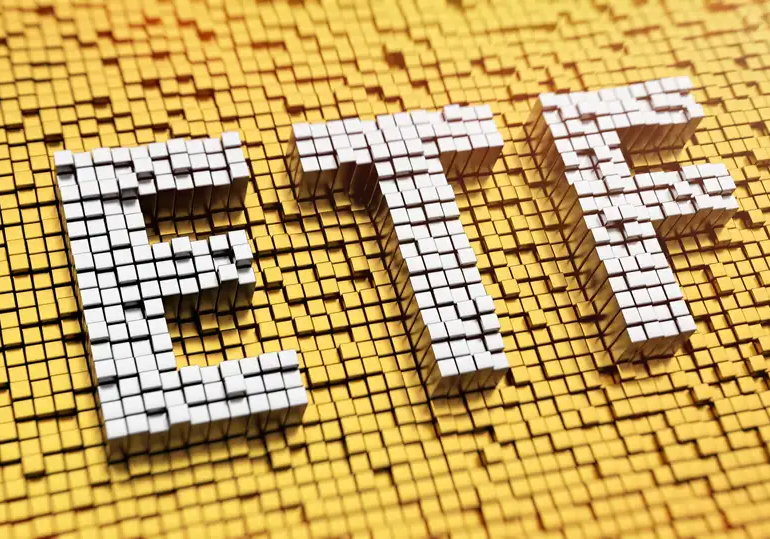Everyone wants to know: Which ETFs will soar in 2021?
Though there will be no shortage of articles making such predictions, my prediction is that they will be mostly wrong. Rather than join the crowd and recommend funds like an inverse brick and mortar retail ETF, I’m taking a different route, and reviewing the ETFs that offer the best chance of building long-term wealth.
The criteria for all selections are that they must be broadly diversified, low cost, cheap to buy (small bid-ask spread), have significant assets to minimize tracking error, and have a history of returning close to the benchmark return over five years. (I’m listing Vanguard’s assets only for the ETF share classes but the Vanguard mutual fund share classes are managed together with their ETFs.)
The winners for 2021 are:
Top US Stock ETFs
My two top picks are the iShares Core S&P Total U.S. Stock Market ETF (ITOT) and the Vanguard Total Stock ETF (VTI). From the numbers below, you can see how they match the criteria. If you want the return of the U.S. stock market and to best most investors in U.S. stocks, these fit the bill.
| ITOT | VTI | |
| Annual Expense Ratio | 0.03% | 0.03% |
| Average Bid/Ask Spread | 0.01% | 0.01% |
| Number of Holdings | 3,552 | 3,550 |
| Assets Under Management ($B) | $30.8 | $189.2 |
| 5-Year NAV Return vs. Benchmark | 0.00% | -0.02% |
Top Int’l Stocks
Though international stocks have badly lagged for over a decade, I’m not giving up and will stick to diversification.
Using the same criteria here as in U.S. stocks, I’ve excluded funds that just invest in certain markets (such as IEFA and VEA), as I want to include emerging markets, Canada and small cap stocks. Vanguard and iShares again were my picks, with the iShares Core MSCI Total International Stock ETF (IXUS) and the Vanguard Total International Stock ETF (VXUS).
| IXUS | VXUS | |
| Annual Expense Ratio | 0.09% | 0.08% |
| Average Bid/Ask Spread | 0.02% | 0.02% |
| Number of Holdings | 4,292 | 6,977 |
| Assets Under Management ($B) | $24.1 | $34.9 |
| 5-Year NAV Return vs. Benchmark | 0.19% | -0.02% |
It’s interesting that IXUS bested its benchmark, but I don’t necessarily consider that a good thing. It holds 4,292 securities, yet its benchmark has 6,323 holdings. That’s presumably tracking error, which could be the result of its higher average market cap of its holdings, as large cap outperformed small cap. The Vanguard fund holds nearly 7,000 securities.
Top Bond Funds
This category has additional criteria beyond costs and diversification. To be included, funds must have high quality bonds.
I’ve excluded international bonds because nonhedged funds don’t act as a shock absorber, and funds that hedge against foreign exchanges are too expensive. Also, with the current yield curve, I don’t want to go short to earn nothing, or go long to take on too much interest rate risk. So, I’m selecting intermediate-term bond ETFs.
I’m selecting mostly funds that track the Bloomberg Barclays Aggregate Bond Index, but also a fund that uses Treasury inflation protected securities (TIPS) as a shield against possible inflation. The three ETFs I chose were the iShares Core U.S. Aggregate Bond ETF (AGG), the Vanguard Total Bond Market ETF (BND) and the Schwab U.S. TIPS ETF (SCHP).
| AGG | BND | SCHP | |
| Annual Expense Ratio | 0.04% | 0.04% | 0.05% |
| Average Bid/Ask Spread | 0.01% | 0.01% | 0.02% |
| Number of Holdings | 9,184 | 18,331 | 44 |
| Duration | 5.9 | 6.0 | 7.7 |
| Assets Under Management ($B) | $83.4 | $65.9 | $13.50 |
| 5-Year NAV Return vs. Benchmark | -0.06% | -0.08% | -0.07% |
It’s important to note that AGG and BND follow different versions of the Bloomberg Barclays Aggregate Bond Index. As I previously noted, BND is taking on more credit risk since it uses a float-adjusted version of that index that excludes a large amount of U.S. government bonds that have been repurchased by the U.S. government.
Indeed, Morningstar now categorizes BND with medium-credit quality, recently dropping it from high, whereas AGG is still categorized as high credit quality. Regarding this downgrade, a Vanguard spokesperson said the fund’s average credit quality is AA, and not A, as Morningstar shows. Furthermore, Vanguard believes “an index should represent the investable market,” which would exclude bonds repurchased by the U.S. government.
According to Ben Johnson, Morningstar’s director of global exchange-traded fund research, the “differences in credit quality between AGG and BND are minor and both should act as a ballast when stocks tank.”
He noted that Vanguard isn’t making an active decision to take on more credit risk, but rather buying the index of investment-grade bonds not repurchased by the U.S. government. For that reason, I’m not selling my Vanguard Total Bond Fund.
To get some protection against the possibility of inflation, I selected the lowest-cost intermediate-term Treasury inflation protected ETF, the Schwab U.S. TIPS ETF (SCHP). The fact that it has only 44 holdings is a result of the U.S. issuing a very small number of these securities. Diversification is far less important, as a U.S. Treasury default would likely make all financial securities worthless.
Conclusion
The odds of these ETFs making the 2021 top-10 performers list is virtually zero.
For those who want to speculate, these would be poor choices. But those speculators should keep in mind that in order to pick parts of the market that will outperform, they must know something the market doesn’t already know.
But for those who want to put math and capitalism on their side, these are my top picks for building long-term wealth in 2021 and beyond.
Source: etf.com
Leave a comment

